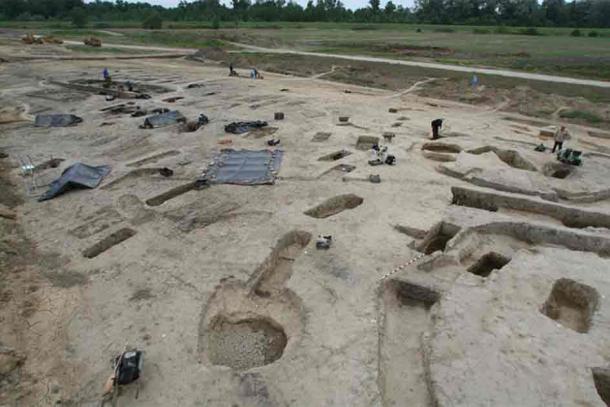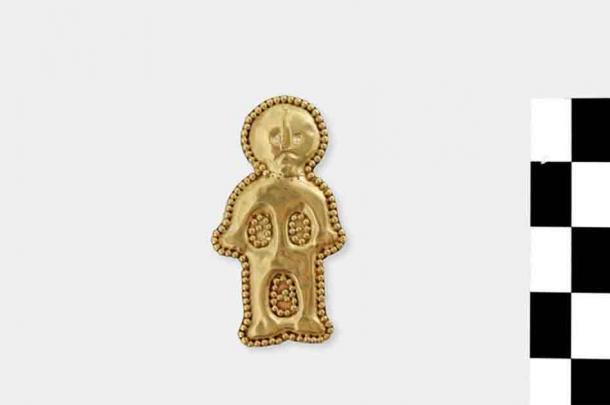Based on the analysis of several hundred skeletons, a new genetic study revealed fascinating new information about how the society of the Avars was organized. These formerly nomadic migrants dominated the Carpathian Basin region from the mid-sixth through the early ninth centuries AD. The Avars were an enigmatic culture of warriors who occupied the Great Hungarian Plain of Eastern Europe 1,500 years ago, but they left no written records behind to answer questions about who they were and how they lived.
The team of archaeological and genetic researchers from the Max Planck Institute for Evolutionary Anthropology in Leipzig, Germany and other institutions in Hungary, Austria and the United States worked to combine DNA data with finds from archaeology, anthropology and historical analysis. In this way they were able to reconstruct the breeding and mating habits of over nine generations of Avars.
Their primary discovery was that women in the Avar culture moved from one group to another, marrying or mating with men who remained in the communities they grew up in for life. They also discovered that it was common for Avars to have multiple partners, which may have increased their chances for breeding success and population growth.

Excavation works conducted by the Eotvos Lorand University at the Avar-period (6th-9th century AD) cemetery of Rakoczifalva, Hungary, in 2006. (Institute of Archaeological Sciences, Eotvos Lorand University Muzeum, Budapest, Hungary/Nature)
Unearthing Secrets from Cemeteries of the Avars
In an article published in the journal Nature, the researchers described their analysis of the DNA of 424 skeletons excavated from four Avar cemeteries in Hungary. Through their work they discovered that 298 of these individuals were closely related. Using this population as a base they tracked and charted familial connections over a period ranging from 567 AD into the early ninth century.
It was during this time that the Avars—who were migrants from the Eurasian Steppe to the east—settled in and occupied the Carpathian Basin. The Avars were organized around groups or clans, which would include one established leader along with a cadre of horse-mounted warriors and their extended families.
After centuries of being nomadic they built permanent settlements on the Great Hungarian Plain in the early seventh century, and soon they began to bury their deceased in sprawling multigenerational cemeteries. Befitting their special status, Avar elites were often entombed in elaborate structures outfitted with impressive collections of burial goods, including jewelry, weapons and the remains of their most cherished horses.
The Surprising Relationship between Avars’ Genetics and Culture
Over the years, archaeologists have unearthed somewhere in the neighborhood of 100,000 separate Avar burials. The grave goods left behind by the culture of the Avars have revealed many details about Avar cultural practices and customs, specifically about their funeral rites but also about the kinds of goods they made or acquired in trades.
While the Avars weren’t literate, many of the people who lived near them were. Archaeologists have learned more about Avar society and culture from the descriptions offered by these groups, in particular the Franks and the Byzantines, who saw the Avars as rivals or enemies.
Meanwhile, other studies of Avar DNA, undertaken over the past few years, have revealed more about the migration patterns that brought these wandering people to the Carpathian Basin. These studies found separate strains of Eurasian, Northeast Asian and European genetic material in the genomes of the Avars, showing that they had originally come from the north and east before ultimately blending in with local Eastern European populations.

Gold figurine from the excavation at Rakoczifalva, Hungary. Metal detector find from the territory of the Avar cemetery (7th century AD). (Institute of Archaeological Sciences, Eotvos Lorand University Muzeum, Budapest, Hungary/Nature)
Genetic Analysis Unravels Patrilineal Traditions of the Avars
In this most recent genetic analysis, the experts were able to fill in some missing information about how the Avars lived at the community level. Through the tracing of family relationships over multiple generations, they were able to show that Avar culture was strictly patrilineal, meaning males stayed in their communities and maintained their status there, while women would regularly move into new community groups to join their partners.
This meant women were relied on to bridge gaps that might otherwise have caused different Avar communities to pursue separate agendas. “In a way, this pattern shows the role of females in promoting the cohesion of this society,” explained senior study author Zuzana Hofmanova, an archaeogenetics specialist from the Max Planck Institute for Evolutionary Anthropology. “It was the role of females that connected the individual communities.”
Another discovery that emerged from this DNA study was the revelation that Avars frequently mated with several reproductive partners. Their practices included what are known as levirate unions, where related males (fathers and sons, or brothers, for example) would have children with the same woman at different points in time.
According to study co-author Guido Alberto Gnecchi-Ruscone, who is also an archaeogeneticist at the Max Planck Institute, the popularity of this practice revealed that Avar society “maintained a detailed memory of its ancestry and knew who its biological relatives were over generations.”
In their study of specific patrilineal lines, the research team discovered something interesting about the societal evolution of the Avar group who buried their dead in a large cemetery excavated near the village of Rakoczifalva in central Hungary. The researchers tracked changes in genetics that matched shifts in grave styles and food choices to reveal that a political transition of some type had occurred in the second half of the seventh century, where one patrilineal line had replaced another in positions of authority.
It seems this change in culture was not entirely localized, but foretold larger transformational developments in the Avar world. “This community replacement reflects both an archaeological and dietary shift that we discovered within the site itself, but also a large-scale archaeological transition that occurred throughout the Carpathian Basin,” study co-first author Zsofia Racz, an archaeologist at Eotvos Lorand University in Budapest, confirmed.
Cemeteries of the Avars Preserve their Historical Memory
The hegemony of the Avars in the Carpathian Basin ended in the early ninth century. At this time the lands they controlled, which included much of what is now Hungary and Bulgaria, were invaded and conquered by the forces of Charlemagne, the legendary King of the Franks and emperor of the Carolingian Empire who ultimately united the peoples of central and west-central Europe under one political umbrella.
Despite their eventual absorption into Charlemagne’s fiefdom, what the Avars left behind in their gigantic cemeteries reveals the truth about who they were and how they lived during their independent years. This has provided researchers from different disciplines with a golden opportunity to study a culture that might otherwise have been forgotten.
Top image: Burial with a horse at the Rakoczifalva site, Hungary (8th century AD). This male individual of the culture of the Avars, belongs to the 2nd generation of pedigree 4, and was one of the sons of the founder of this kinship unit. Source: Institute of Archaeological Sciences, Eotvos Lorand University Muzeum, Budapest, Hungary/Nature
By Nathan Falde
